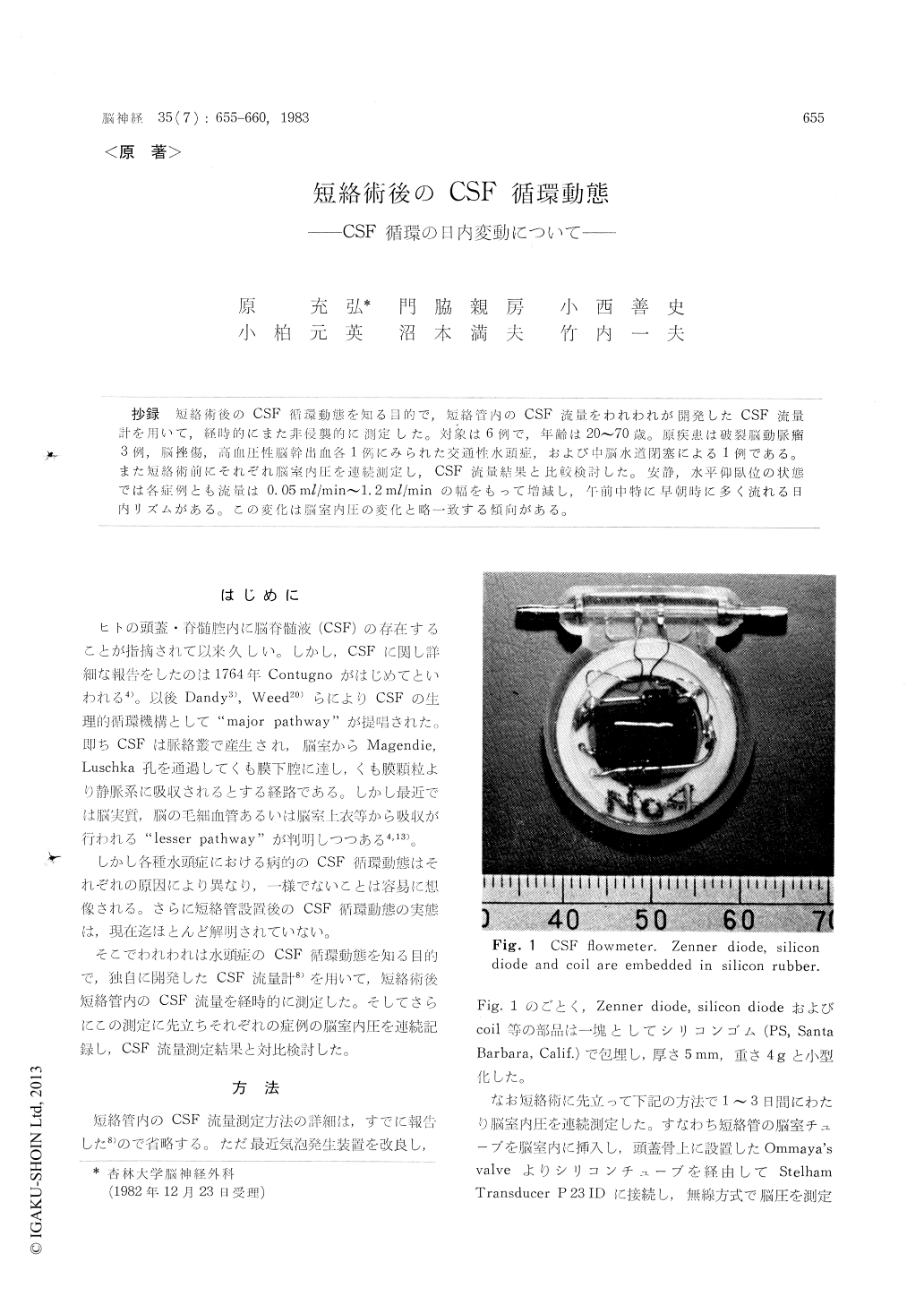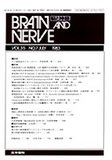Japanese
English
- 有料閲覧
- Abstract 文献概要
- 1ページ目 Look Inside
抄録 短絡術後のCSF循環動態を知る目的で,短絡管内のCSF流量をわれわれが開発したCSF流量計を用いて,経時的にまた非侵襲的に測定した。対象は6例で,年齢は20〜70歳。原疾患は破裂脳動脈瘤3例,脳挫傷,高血圧性脳幹出血各1例にみられた交通性水頭症,および中脳水道閉塞による1例である。また短絡術前にそれぞれ脳室内圧を連続測定し,CSF流量結果と比較検討した。安静,水平仰臥位の状態では各症例とも流量は0.05ml/min〜1.2 ml/minの幅をもって増減し,午前中特に早朝時に多く流れる日内リズムがある。この変化は脳室内圧の変化と略一致する傾向がある。
The purpose of this study is to study the pathophysiology of the cerebrospinal fluid (CSF) formation and circulation after a ventriculo-peritoneal shunt operation. With the CSF flow-meter we developed, the CSF flow rate in the shunt tube has been measured non-traumatically over a 24-hour period in six patients.
These include both communicating and non-communicating hydrocephalus patients with ages ranging from 20 to 70. There were three cases of ruptured intracranial aneurysm, one cerebral contusion, one hypertensive brain stem hemorrhage and one occlusion of the aqueduct sylvius.
Intraventricular pressure was continuously recorded for 24 hours prior to the shunt operation in each case, and the pressure changes were compared with the measured CSF flow rates in the shunt tube.
The flow rate fluctuated between 0.05 ml/min and 1.2 ml/min with the supine position and high flow rates were detected in the early morning. Each case showed its own rhythm of CSF flow fluctuation during a 24-hour period, and the changes were compatible with the intraventricular pressure.
It is suggested that there may be a relationship between these changes and an increased cerebral blood volume during the REM sleep stage.

Copyright © 1983, Igaku-Shoin Ltd. All rights reserved.


